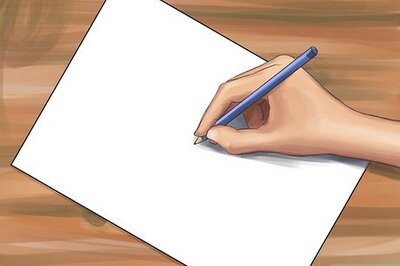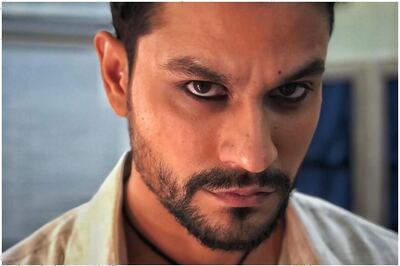
views
window._taboola = window._taboola || [];_taboola.push({mode: 'thumbnails-mid-article',container: 'taboola-mid-article-thumbnails',placement: 'Mid Article Thumbnails',target_type: 'mix'});
let eventFire = false;
window.addEventListener('scroll', () => {
if (window.taboolaInt && !eventFire) {
setTimeout(() => {
ga('send', 'event', 'Mid Article Thumbnails', 'PV');
ga('set', 'dimension22', "Taboola Yes");
}, 4000);
eventFire = true;
}
});
window._taboola = window._taboola || [];_taboola.push({mode: 'thumbnails-a', container: 'taboola-below-article-thumbnails', placement: 'Below Article Thumbnails', target_type: 'mix' });Latest News
The debate over media ethics has never been stronger (and shriller) than it is at the moment. As the "media" becomes a gigantic beast, there has been a growing tendency to blame the media (and especially 24-hour news channels) for all contemporary problems. If Gujarat burns, it's because the media chose to show images of the violence and "inflame" passions. If the Agra summit fails, it's because a pesky media chooses to turn diplomacy into a news "event". If hijackers are released in Kandahar, it's because television channels focus on the families of the hostages. And if a sting operation exposes corruption in politics, then question the bona fides of the journalist and the hidden camera. Bottom line: if you can't shoot the message, at least make sure you shoot the messenger.
The latest debate on media ethics though is a little more complex. It's been sparked off by a news story that showed a man self-immolating in the heart of Patiala. The visual images were compelling: a trader with garlands around his neck, pouring kerosene over his body, and then set himself aflame. He was surrounded by a police man, fellow-traders, the aam janta and of course, the ubiquitous camera. There was a debate on CNN-IBN between celebrated photographer Raghu Rai and media watcher Akhila Sivadas that raised crucial questions. The two central ones: should the camera crew be focusing on saving the life of the man instead of keeping the camera rolling? Secondly, should television channels be showing the pictures in the first place as a lead story in the news? Raghu Rai firmly believed that the cameraman's sole job was to shoot the story, Akhila Sivadas was on the diametrically other side of the debate.
Here are my thoughts: a journalist records instant history, good, bad and the ugly. A journalist is the observer, a fly on the wall. To, therefore, expect journalists to directly involve themselves in a news event would be to deny the journo/cameraperson of the sole privilege they have: the power of observation. Notice that I have avoided using the word "neutral" observer. Sure, we as journalists would like to be as neutral as possible, but it is also expected that the journalist will stand for the victim, will tell the story from the eyes of those who have suffered. "Objectivity" is relative. The camera lens can never be fully objective. It will tell the story from the perspective of the cameraperson which may not always fit it with the opinion of the viewer. But doing it any other way would reduce journalism to sterile stenography.
In this instance, the journalists and camerapersons in Patiala found themselves in an unenviable situation. The task of saving the individual was that of the gaping citizenry and in particular, the policeman whose primary job it is to maintain law and order. If a policeman cannot douse the fire, do you really expect the journalist to play the role of fire-fighter? So my answer to the first central question: the cameraperson had little option but to keep rolling the pictures. Sad though that might seem to some, it is the harsh reality.
Should we have shown the pictures in prime time news? First, let me say that unlike a few other channels, we blanked out the man's face and the body being set aflame. We also did not show any close-ups. But yes, we did carry the story as one of our headlines. Not only because the pictures were powerful, but because the story itself was a compelling one. In the heart of the Punjab chief minister's constituency a man self-immolates because he claims that his shop has been demolished and there has been no rehabilitation. That is "news", and a story that must be told. My worry though is that in our obsession with the dramatic pictures, maybe we did not tell the "full" story on day one, in particular the context in which this man chose to immolate himself. That is where television skirts the dangerous boundary between news and "voyeurism". Maybe, the voyeuristic tendencies forced us to give the story an exaggerated importance, maybe as journalists we focused on the pictures to the absence of all else. Maybe. All I can say in defence is that as a channel we want to tell you all kinds of stories without imposing our view on you. At the same time, we will continue to wrestle with moral dilemmas when reporting a story like the Patiala one, but in the end we will follow our conscience.
A disturbing tailpiece: a young man in a Rajasthan village immolated himself yesterday. The locals have blamed the media coverage of Patiala for the incident, saying the young man was "inspired" by what happened a few days earlier. All I can say in the defence of journalists: in the name of God, stop shooting the messenger. Meanwhile, do keep the debate alive on the blog.


















Comments
0 comment